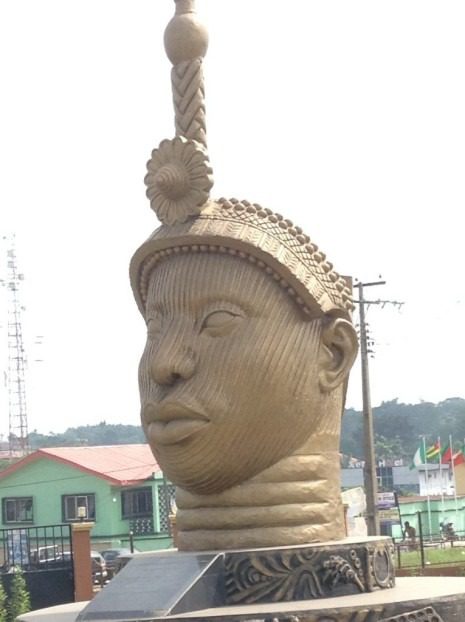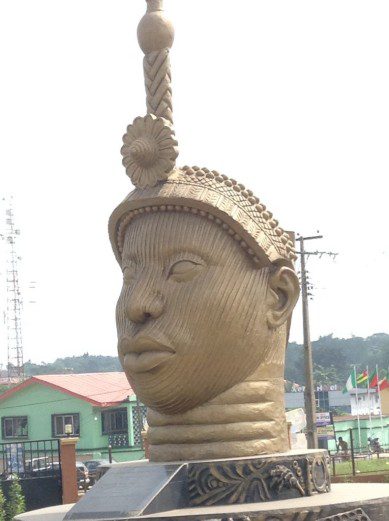Life And People
Ile-Ife: Tradition Vs. Modernity (3) -By Dele Agekameh


After two weeks of anxiety, suspense and denial, the controversy surrounding the fate of Oba Okunade Sijuwade, Olubuse II, the Oni of Ife, finally came to an end last Wednesday, August 12, 2015, when the Ife Traditional Council formally announced his transition. That announcement laid to rest the speculation that had dominated the media regarding the fate of the Oba since the evening of July 28, 2015. On Tuesday, July 28, 2015, news of the demise of the frontline traditional ruler in a high-brow Hospital in London hit the airwaves and sent cold shivers all over the place. Apparently jolted by the news, the Ife Traditional Council vehemently denied that the Oba had passed on. The Council said the “rumour” was the handiwork of mischief makers.
But the ‘rumour mongers’ were unrelenting in their reportage of the transition of the Oba. This created a lot of confusion. And this was the situation until Wednesday last week; a clear sixteen days after the news first broke out, when the news of the Oba’s transition was officially made known by the Traditional Council. From then on, various traditional cult groups held bizarre displays around the town and within the fortress of the palace as part of the traditional rites of passage for the revered Oba. Before then, the Oro cult group had clandestinely commenced certain rites in the ancient town since the news was first broken by the media.
The people of Ife have always placed a high premium on their culture and tradition which was why in the face of the ceaseless media frenzy on the fate of the Oni, the people of the ancient city held on tenaciously to their age-long belief.
As required by tradition, markets were shut and people were kept indoors. The ceremonies came to a crescendo last Friday when an open-air interdenominational service was held for the repose of the soul of the departed Oba after which his remains were later interred at a private burial ceremony within the palace walls. That ended an era in the history of the ancient town.
But while the controversy lasted, the media was awash with so much distortions, misinformation and misinterpretations which further compounded the schism between the tradition of the ancient town and modernity. For instance, in reporting activities at the Oni’s palace, allusions were made to the existence of an Ile Nla and also Ile Ase. While it is true that there is a magnificent edifice, a bungalow, called Ile Nla within the palace grounds, there is nothing called Ile Ase in that palace. What exists side-by-side with Ile Nla, which is like an extension of the Ile-Nla itself, is called Ilegbo. Within that Ilegbo, is a sacred place called Ile Ominrin. Ile Ominrin is the powerhouse in the palace. This is the place where most of the gods and deities worshipped in the ancient town are invoked. It is the place where the Oni wears his traditional Aare crown which he wears once in a year during the Olojo festival, a festival set aside for the worshipping of Ogun, the god of iron. This is also the place where the final procedure for the enthronement of a new Oba takes place. A deceased Oba is also prepared for burial there.
…there was a mention of an Abobaku, that is, he who dies with the king. While it may not be disputed that it probably existed in the past, the late Oni Aderemi was said to have put an end to such practice during his 50-year reign as part of measures to do away with some of the practices of old that he found incompatible with modern reality.
For many years, Ile Nla, a building adorned with beautiful carvings depicting the ancient tradition and customs of the people of Ile-Ife, doubled as the town hall before another befitting town hall was built many years ago at the inception of the reign of the late Oba Sijuwade. The new town hall is located at a place called Oke-Enuwa, a walking distance from the palace and very close to Okemogun, the shrine of the god of iron. Inside the Ile Nla are two graves at the entrance and another two graves at the rear part of the building which are said to be the graves of some previous Onis. The grave of the late Oni Adesoji Tadeniawo Aderemi, who died on July 3, 1980, is located at a place adjacent Ile Ominrin, very close to Ile Nla. The late Oni Sijuwade is believed to have been laid to rest near the grave of Oni Aderemi. Except for these ones mentioned here, it is not very clear where the remains of other previous Onis were interred.

Also there was a mention of an Abobaku, that is, he who dies with the king. While it may not be disputed that it probably existed in the past, the late Oni Aderemi was said to have put an end to such practice during his 50-year reign as part of measures to do away with some of the practices of old that he found incompatible with modern reality. In the past, the person so known as Abobaku was called Sarun, the traditional aide-de-camp to the Oni. Though with his skinned head, the Sarun looked more like an Emese, as the traditional bodyguards of the Oni are called, the Sarun is a coveted office. The occupant enjoys a number of privileges including unfettered access to the Oni. For anybody who wants to see the Oni, the Sarun is the person to meet. He is the person who acts as the go-between the Oni and the Chiefs or Emeses and other visitors to the palace.
I remember in July 1980, when Oni Aderemi joined his ancestors, the then Sarun, now late, was so terrified that he was pacing up and down in the palace with his eyes turned red murmuring: “Aderemi ku, mo ku re ni, Aderemi ku, mo ku re ni…” meaning, “Since Aderemi is dead, I am dead”.
The Sarun occupies a pride of place in the palace of the Oni. The story is that, in the days of yore, once an Oba gave up the ghost, it was customary for the Sarun to automatically follow him in order to serve him in the great beyond. But Oni Aderemi stopped all that including other sacrifices probably involving the shedding of human blood. I remember in July 1980, when Oni Aderemi joined his ancestors, the then Sarun, now late, was so terrified that he was pacing up and down in the palace with his eyes turned red murmuring: “Aderemi ku, mo ku re ni, Aderemi ku, mo ku re ni…” meaning, “Since Aderemi is dead, I am dead”.
During that period, the Sarun was extremely mindful of movements around him. And as this was going on, some of the Emeses, who probably had been envious of Sarun’s awesome powers within the palace, were noticed talking in hushed tones whether to uphold the tradition or not, in spite of the abolition of such practices by the departed Oni. Some of the very stubborn ones among them were overheard saying: “Abi ki a se bi won se nse?” meaning, “Should we do it as it is done?” Fortunately, the Sarun was spared.
A new Oba will always appoint his own Sarun particularly among the Emeses (bodyguards). Chief Adekola Adeyeye, the present holder of the Jaran traditional chieftaincy title in Ife, who is second in command to the Lowa of Ife, the highest traditional chief of the ancient town, was the second Sarun of the late Oba Sijuwade, a position he held for fifteen years, before he was converted to a traditional chief because of the late Oni’s love for him. He rose rapidly through the ranks to his present status as Jaran. So the talk of human sacrifices during the rites of passage for the late Oni is a figment of the imagination of the writers.
By and large, the significance of what happened last week is that Ife has strong traditional and cultural beliefs that have remained sacrosanct in spite of modernity and its attendant encroachment on traditional beliefs and customs in Yoruba land in particular and Africa in general. The people of Ife have always placed a high premium on their culture and tradition which was why in the face of the ceaseless media frenzy on the fate of the Oni, the people of the ancient city held on tenaciously to their age-long belief. Now that the late Oni’s remains have been interred, the race to fill the vacant stool has started in earnest. That topic is for another day.
For comments SMS (only) to: 08058354382




















